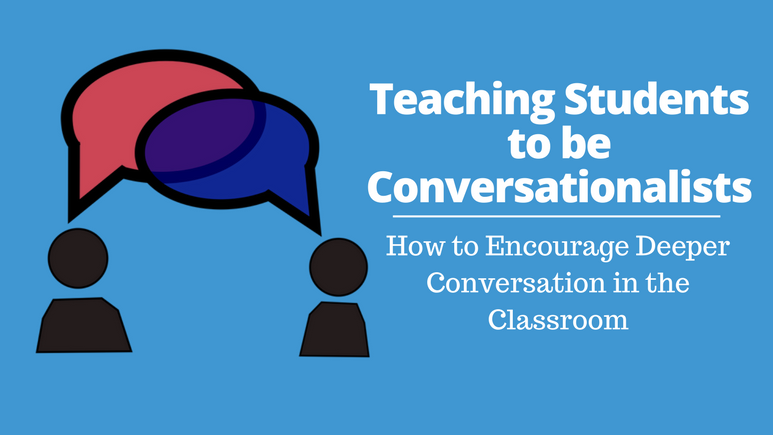
How do you get people to like you?
This seems like an elusive question that has likely perplexed mankind for millennia.
After all, there’s a common human tendency to want to be liked.
Scientists have drawn on a body of research to answer this question and what they found might surprise you… ask people questions!
This discovery plays on human nature. Whether we admit it or not, we love to talk about ourselves and to feel that someone is interested in what we have to say.
When you ask someone else questions and then genuinely listen to their responses, you are signaling that you are interested in their ideas and value them as a person. This triggers a positive reaction in the person you’re talking to.
At the end of the day, this is what it means to be a good conversationalist. It’s just as much about listening as it is about talking yourself.
Apart from getting others to like you, there are plenty of benefits to becoming a better conversationalist. Read on for a few of our favorites.
The Importance of Being a Good Conversationalist
Be a Good Friend
One of the most valued qualities in a friend is someone who listens. Friendship is founded on and trust, and being a good listener is valuable for earning someone’s trust. Best of all, good friends will always be there to return the favor when you need someone’s ear.
A Bridge to Knowledge
People learn in lots of different ways, and one of the best ways to learn is from others. Engaging in conversations with people from different walks of life of professional backgrounds is an ideal way to learn more about the world around us.
Networking
Sometimes who you know is just as important as what you know. Love it or hate it, networking is an important life skill that requires you to talk with confidence and listen with attention. If you can do both of these things with friends, acquaintances, and strangers alike, you’re on your way to building a solid network of connections that can be valuable friends and resources later in life.
Make the Sale
Not all students will grow up to be salesmen, but all students will need to sell someone on an idea at various points in their lives. Whether delivering a pitch for why they’re the best candidate for a job or convincing a parent to let them borrow the car, students who can deliver their ideas in a clear and confident manner are much more likely to get what they want.
Build Empathy
In today’s political and social landscape, many people lack the ability to see issues from someone else’s point of view. Thus, empathy is an increasingly important skill to instill in our students. Learning to hold a respectful conversation with someone else and genuinely listen to their point of view can go a long way in making the world a more tolerant place.
Strategies to Encourage Deeper Conversation in the Classroom
Set Norms
Students are much more likely to participate if they feel that they are in a safe space where their ideas will be treated with respect. Setting conversation norms is an important first step in creating this safe space. While norms will likely vary depending on the ages of your students, good options include “track the speaker with your eyes”, “assume best intent”, “use a respectful tone”, and “all ideas are valid”.
Model
For some students, conversation skills come more easily than for others. For those kids who seem to struggle to engage in authentic conversation, they likely need a good example. Plan a few minutes every few days to engage in a one-on-one conversation with these students. Model active listening, asking appropriate questions, and showing genuine interest in what someone else is saying.
Seize Teachable Moments
When it comes to creating a classroom space where all students feel comfortable speaking their mind in a respectful way, it’s important to make a big deal the first time there is a breach of this safe space. If a student calls someone else’s idea “stupid” or violates a norm in another way, don’t just let it slide! Engage the class in a conversation about why conversation norms exist and make sure that everyone is on board before moving on.
Track Conversations
During an open-ended discussion, track the flow of conversation on a piece of paper of your room’s seating chart, drawing a line to each student when he or she volunteers an idea. At the end of the conversation, show the conversation tracker to the class and ask them to make observations. Who talked the most? Did anyone not talk at all?
Giving students a visual cue to represent their role in a discussion will make them think differently about how they participate in the future. Active participants will be more likely to invite quieter students to speak.
Ask Open-Ended Questions
A really strong question is the fuel for a rich conversation. Encourage students to talk about controversial topics such as gun control, to make educated guesses with a partner in science, or to evaluate the decisions of a character in a book. Students are much more likely to talk openly when they genuinely want to answer the question at hand.
Take Turns
There are lots of ways to build turn taking into a discussion. If students are working in partners, assign a fixed amount of time for the partner on the left to speak before calling out to switch. In a whole group discussion or seminar, give all students a post-it note. When a student speaks, she needs to turn in her post-it and can’t speak again until everyone has spent their post-it, ensuring that all voices are heard before some people share again.
What other tips and techniques for promoting deep and engaged conversations in your classroom? Leave your ideas in the comments below!



Leave a Reply